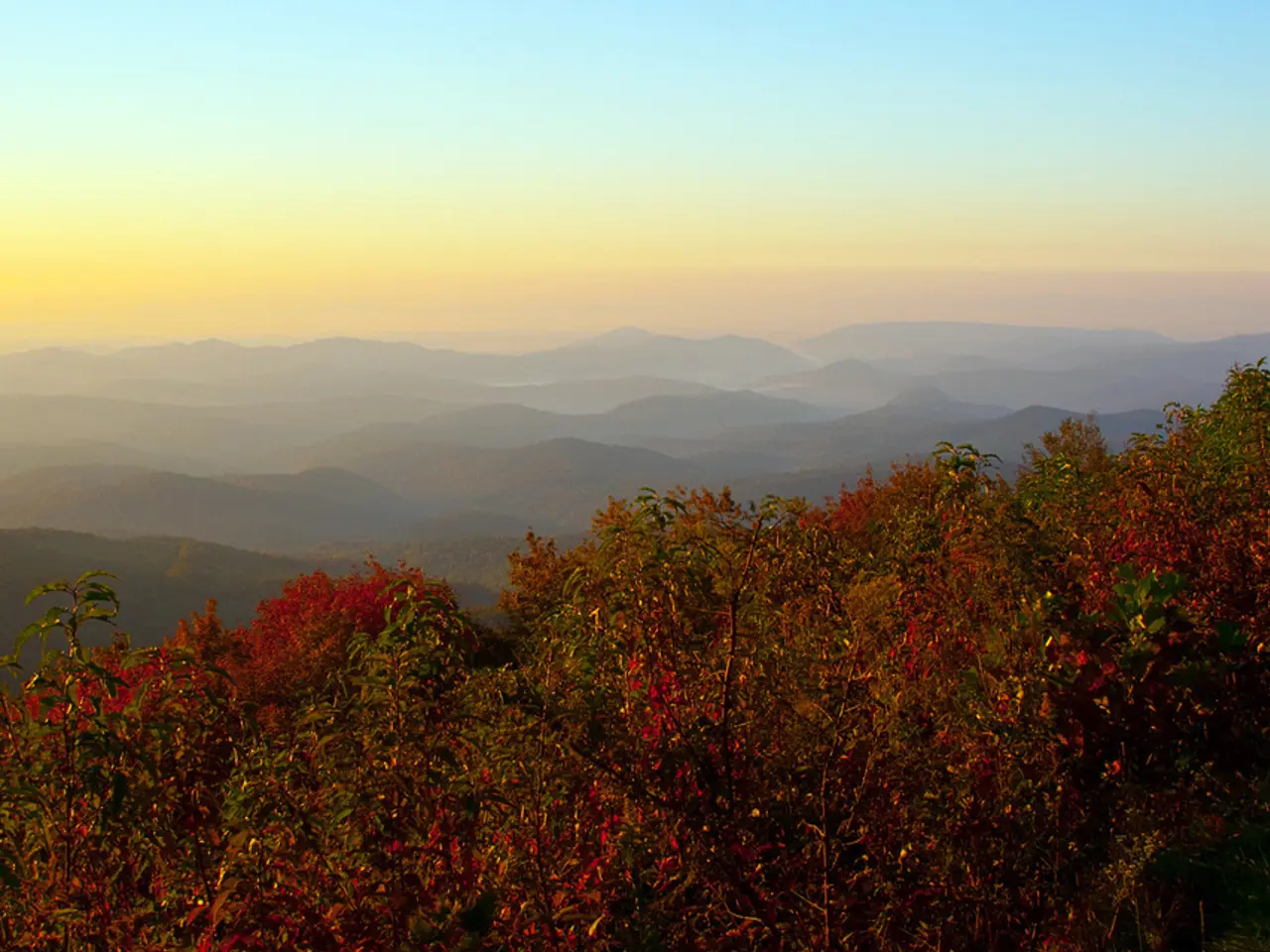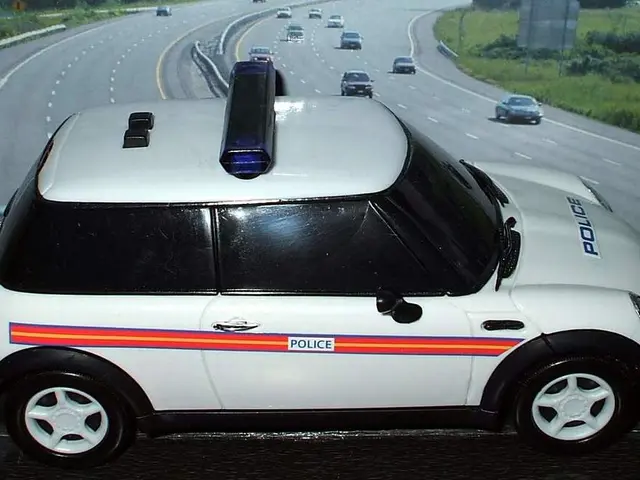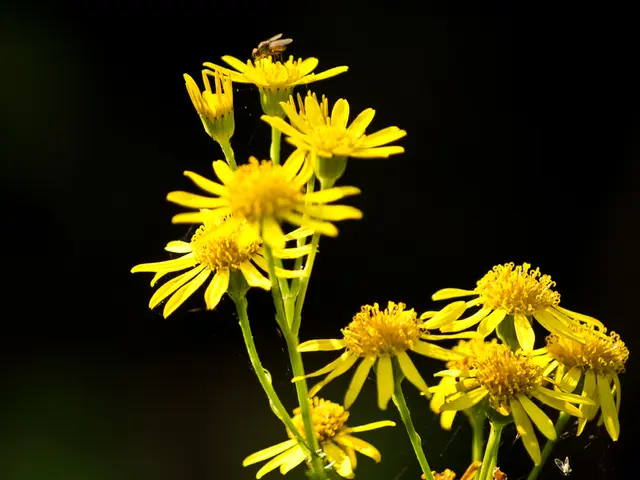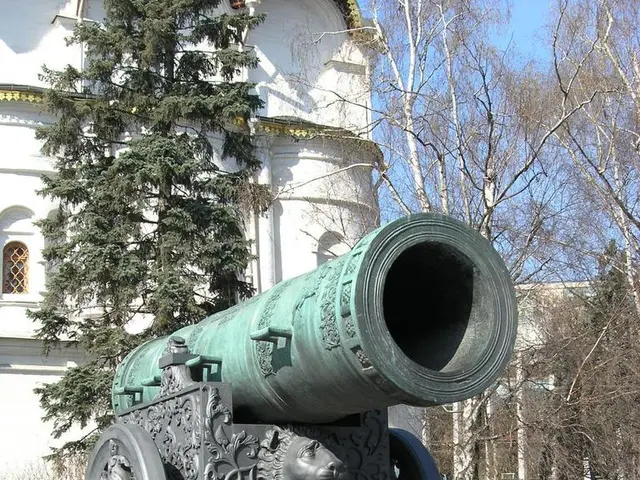Explore Mount Rainier National Park: America's Dazzling Alpine Haven
Mount Rainier National Park, established in 1899, is a must-visit destination for nature enthusiasts and outdoor adventurers. Situated in west central Washington, the park is easily accessible from Seattle, Tacoma, Yakima, and Portland, making it a popular destination for locals and tourists alike.
The park boasts six auto campgrounds providing almost 600 sites, with Cougar Rock, Ipsut Creek, Mowich Lake, Ohanapecosh, Sunshine Point, and White River being the six auto campgrounds. Sites at two of the six campgrounds are issued by reservation only from 01 July through Labor Day, while all campgrounds are open for stay by the end of June through mid-September, except Sunshine Point, which is open for auto camping all year round.
For those seeking a more immersive experience, backcountry camping is permitted through the park all year round by permit only.
Mount Rainier, standing at 14,411 feet high, is often said to create its own weather, with the heaviest precipitation occurring between October and early May. The park encompasses 378 square miles (980 square kilometres, 235,612.5 acres). It is home to the greatest single-peak glacial system in the United States, with glaciers radiant from the summit and slopes of the volcano.
The Nisqually Entrance, located on the southwest side of the park on Stateroad 706, is open year-round and is the most frequented entrance, offering stunning views, especially near the Paradise area. The Sunrise Entrance provides great views but seasonal access only.
For those who prefer not to drive, organized day tours and private transfers from Seattle are available, providing hassle-free visits with guides and transport included. These tours can also combine wine tasting in Yakima Valley for a diverse day experience.
From Seattle, the most popular route is to take I-5 South from downtown Seattle and then take Exit 127 to connect to SR 512 East toward Mt. Rainier, leading to the Nisqually Entrance, which is about a 90-mile drive (~2 hours) from Seattle. The White River Entrance is another option, but it is closed in winter.
From Tacoma, a typical route is to take I-5 North to SR 512 East, then follow signs for the Nisqually Entrance of Mount Rainier National Park. Tacoma is closer to Mount Rainier than Seattle, so driving times may be slightly less than 2 hours depending on traffic.
From Yakima, the most common route is to take I-82 West to I-90 West toward Seattle, then connect to SR 167 South and then to SR 410 or SR 165 leading to the park’s eastern entrances like Sunrise or Ohanapecosh.
From Portland, the best route involves taking I-5 North into Washington toward Tacoma or Seattle. From Tacoma or Seattle, continue as above via I-5 and SR 512 East to reach the Nisqually Entrance.
In conclusion, Mount Rainier National Park offers a wealth of opportunities for exploration and adventure. With its stunning landscapes, diverse wildlife, and numerous outdoor activities, it is a destination not to be missed. Whether you prefer to drive, take a tour, or embark on a backcountry camping expedition, Mount Rainier National Park promises an unforgettable experience.
[1] [Mount Rainier National Park Official Website](https://www.nps.gov/mora/index.htm) [2] [Mount Rainier National Park Visitor Guide](https://www.nps.gov/mora/planyourvisit/upload/Mount-Rainier-Visitor-Guide-2021.pdf) [3] [Mount Rainier National Park Road Status](https://www.nps.gov/mora/learn/management/road-status.htm) [4] [Mount Rainier National Park Day Tours and Transfers](https://www.seattletours.com/tours/mount-rainier-national-park-tours)
- Mount Rainier National Park, established in 1899, offers a must-visit destination for nature enthusiasts and outdoor adventurers.
- The park is situated in west central Washington and is easily accessible from Seattle, Tacoma, Yakima, and Portland.
- Six auto campgrounds provide almost 600 sites within the park, with Cougar Rock, Ipsut Creek, Mowich Lake, Ohanapecosh, Sunshine Point, and White River being the options.
- Two of the six campgrounds issue sites by reservation only from 01 July through Labor Day.
- All park campgrounds are open for stay by the end of June through mid-September, except Sunshine Point, which is open all year round for auto camping.
- For those seeking a more immersive experience, backcountry camping is permitted all year round by permit only.
- Mount Rainier, standing at 14,411 feet, is known to create its own weather, with the heaviest precipitation occurring between October and early May.
- The park spans 378 square miles (980 square kilometres, 235,612.5 acres) and is home to the greatest single-peak glacial system in the United States.
- The Nisqually Entrance, on the southwest side of the park, offers stunning views, especially near the Paradise area and is open year-round.
- The Sunrise Entrance provides great views but has seasonal access.
- Organized day tours and private transfers from Seattle are available, offering hassle-free visits with guides and transport included, and they can also combine wine tasting in Yakima Valley.
- From Seattle, the most popular route is to take I-5 South from downtown Seattle and then connect to SR 512 East toward Mt. Rainier, leading to the Nisqually Entrance.
- The park's landscapes, diverse wildlife, and numerous outdoor activities make it a destination not to be missed, perfect for those who enjoy nature, travel, and home-and-garden lifestyle.
- For up-to-date information on park road status, visit the Mount Rainier National Park Road Status webpage, while Mount Rainier National Park Official Website and Visitor Guide offer more details on attractions and activities within the park.




